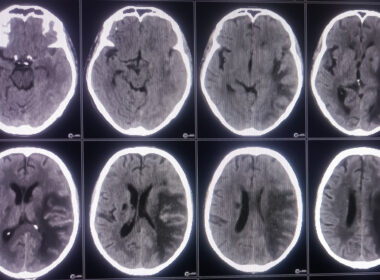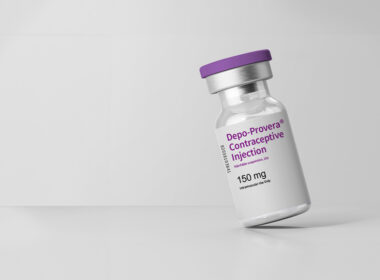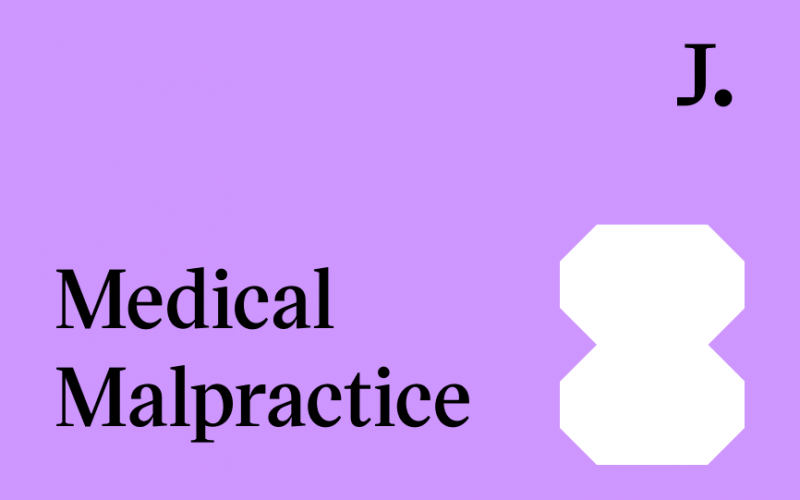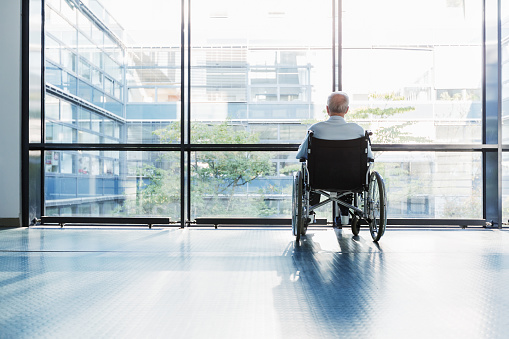Before learning all about Erb’s palsy treatment, let’s give a general overview and terminologies related to Erb’s palsy.
What is Erb’s Palsy?
According to recent research, two out of every thousand infants are born with this disorder. It is commonly caused by the sideways stretching of an infant’s neck during a difficult birth.
Erb’s palsy, also called Erb-Duchenne palsy or Brachial Plexus Birth Palsy, is a neurological disorder characterized by shoulder and arm weakness or paralysis. It can affect both newborns and mature humans. Infants often sustain this injury due to the stress placed on their upper limbs and shoulders during birth. Erb’s palsy is also common during complicated childbirth. If one side of the baby’s neck is stretched as the person assisting the delivery pulls it from the birth canal, the nerves may also extend, causing injury.
Babies born with brachial plexus palsy often make full recoveries of arm movement and sensation with regular physical therapy. Parents play an active role in the rehabilitation of children.
Etiology of Erb’s Palsy in Infants
The common cause of etiology includes:
- Spine injury: Spinal injuries such as whiplash, which is trauma that happens when the head is excessively jerked after an automobile accident
- Delivery trauma: Brachial plexus injury can occur due to extreme stretching of the baby’s head during delivery
- Macrosomia: Fetal macrosomia is medical terminology for an oversized baby. The size is classified based on their gestational age. Most babies have a birth size of about 5 to 8 pounds with a 37-40 weeks gestation period. Big babies can increase the likelihood of Erb’s palsy due to overstretching during delivery
- shoulder dystocia: Shoulder dystocia is a medical condition during a complicated delivery where the baby’s shoulders get stuck in the mother’s pelvis leading to nerve damage
Causes of Erb’s Palsy in Adults
Unlike in infants, Erb’s palsy in adults can be caused by factors such as:
- Medical mistakes: The negligence of a healthcare worker during treatment
- Sports injuries: Contact sports such as football are often aggressive and dangerous and injuries sustained while playing can cause brachial plexus trauma
- Automobile accidents: Car accidents can lead to limb damage, depending on the severity of the injuries. If the accident damages the brachial plexus nerves, the victim could suffer from Erb’s palsy.
Types of Erb’s palsy
Erb’s palsy can be identified by testing the damage to the brachial nerve. The various forms of Erb’s palsy include:
Avulsions
An avulsion happens when a nerve is severed from its spinal cord leading to muscle damage or paralysis.
Rupture
The rupture of the nerves is due to nerve compression caused by accidents or medical conditions such as diabetes. Luckily, ruptured nerves must be surgically repaired to treat the injury.
Neuropraxia
This illness is characterized by temporary motor and sensory impairments due to nerve blockage. It is one of the most common forms of Erb’s palsy.
Signs & Symptoms of Erb’s Palsy
The signs and symptoms of Erb’s palsy include:
- Upper body paralysis: This is characterized by the shoulder, arm, and elbow paralysis or drooping. The inability to extend the arm or bend the elbow is the major challenge in upper body paralysis.
- Arm numbness: Tingling or burning sensations in the arms and hands, often called “burners and stingers.”
- Arm deformity: Curled fingers and a backward-pointing palm are telltale signs of “the waiter’s tip” syndrome.
Can Medical Malpractice Cause Erb’s Palsy?
Yes. During delivery, Erb’s palsy is often caused by excessive traction on the infant’s head, neck, arm, or shoulder. Long-term effects of this injury include numbness and paralysis in the affected arm.
How Is Erb’s Palsy Diagnosed?
Physical examination and other testing help diagnose this condition. Some of the tests that can help diagnose Erb’s palsy include:
- Electromyogram (EMG), which checks the health of nerve and muscle fibers
- Diagnostic imaging scan (MRI or CT – myelogram).
- X-ray
Differential diagnosis of Erb’s Palsy
Distinguishing a Klumpke injury, horner syndrome, clavicular fracture, cervical rib syndrome, osteomyelitis of the humerus or clavicle, or septic arthritis of the shoulder from an Erb’s palsy is essential.
Paralysis of the intrinsic muscles, forearm, and hand occurs with a Klumpke injury because of damage to C7, C8, and T1. The newborn child has what is known as a “claw hand” because of damage to the flexor muscles in their wrists, fingers, and forearm pronator.
Although horner syndrome is also due to injury of the T1 vertebrae in infants, it is differentiated from Erb’s palsy due to the presence of :
- upside-down ptosis(slight elevation of the lower lid);
- ptosis(Drooping of the upper eyelid);
- miosis(a persistently small pupil);
- Anisocoria ( A notable difference in pupil size between the two eyes).
Pseudoparalysis after a clavicular fracture is often misdiagnosed as Brachial plexus damage.
A cervical rib syndrome is characterized by shoulder impingement on the cervical spine or stretching nerves surrounding the cervical rib. These symptoms can be mistaken for Erb’s palsy.
Rarely, a BPI (Brief pain inventory) can result from shoulder septic arthritis, humeral, clavicular osteomyelitis, or thrombophlebitis of the vasa vasorum. These conditions can cause ischemic nerve injury, mimicking Erb’s palsy symptoms.
How Is Erb’s Palsy Treated?
Doctors typically recheck individuals with Erb’s birth palsy to see if their nerves have healed on their own, as this happens to most patients.
Complete healing from nerve damage can take up to two years. Generally, Erb’s palsy treatments include surgical, nonsurgical, or physical therapy and specialized techniques.
Surgical Treatment for Erb’s Palsy
Patients with Erb’s palsy may benefit from surgical nerve repair combined with physical therapy. The surgical intervention aims to repair nerve damage and relieve pressure on the brachial plexus nerves, enabling natural healing.
The surgery aims to improve the patient’s range of motion in the upper extremities. If possible, physicians try to avoid operating on younger patients but recommend surgery if the injury is severe and it’s the only option.
The surgical treatments for Erb’s palsy include:
- Nerve graft: The severity of the nerve injury will determine whether a donor nerve graft from another patient’s nerve can be “spliced” in to mend the rupture.
- Nerve transfer: Nerves from other muscles can be used as donors to restore some arm function. Following surgery, the patient may need home rehabilitation activities to regain strength and mobility.
- Joint contractures release: Tightened musculature in the shoulder and elbow can be stretched out to improve range of motion.
- Tendon transfer: This procedure also involves muscle transfers and osteotomies to correct muscle imbalances that limit function. A healthy tendon is detached from its natural location for better arm elevation and reattached to the shoulder.
Physical Therapy for Erb’s Palsy
Physical therapists use a wide range of strategies to aid their patients in recovering from muscle weakness and advancing their motor skills. Physical therapy exercises may include light stretches, sensory stimulation, and strength training to increase the range of motion.
Occupational therapy
Occupational therapy helps people improve their functioning in daily life, such as in school or work. Occupational therapy can help with mundane tasks such as :
- Holding a pen or writing
- Opening doors
- Feeding
- Taking a shower and brushing
Recreational Therapy
Recreational therapies for people with Erb’s palsy include riding horses and swimming. It helps to hasten recovery and allows the patients to return to doing what they love before the injury.
Mental health Support
People with disability struggle to cope with everyday life and often experience feelings of isolation. As such, it is vital that children and adults with Erb’s palsy access quality mental health care, especially if the disability affects their usual way of life. Going for music and talk therapy are some of the ways to offer mental health support.
Complications of Erb’s palsy
Erb’s palsy causes poor innervation, leading to many long-term issues. Many children with brachial plexus injuries will continue to have shoulder, arm, or hand weakness. Additionally, Erb’s palsy may affect a child’s self-esteem.
- Muscle atrophy: Muscle atrophy is the wasting or thinning of muscle mass. It can be caused by prolonged muscle inactivity or conditions such as Erb’s palsy. Other complications that may develop as a result of Erb’s palsy include:
- Joint hypermobility: If a person suffers from joint hypermobility, their joints may have an abnormally high range of motion.
- Osteoporosis: Bones in the hip, spine, and wrist are vulnerable to osteoporosis’s weakening effects and breakage. People are often unaware they have osteoporosis until a bone breaks. However, your bones can gradually weaken over several years—a common complication of Erb’s palsy.
- Osteoarthritis: The most prevalent type of arthritis is osteoarthritis (OA), also known as “wear and tear” arthritis or degenerative joint disease, and most often manifests in the hands, hips, and knees. Joint cartilage degeneration and underlying bone alteration are hallmarks of osteoarthritis.
- Ataxia: This condition is characterized by a lack of muscle coordination and control. People with ataxia have trouble with movement, delicate motor tasks, and maintaining balance.
Prognosis of Erb’s Palsy
For parents of a newborn with this kind of injury, the good news is that it is probably not permanent. According to statistics, seventy-eight to eighty percent of affected infants will be cured during the first year of life if treatment begins within four weeks after birth. Mild Erb’s palsy cases usually improve within a few months. Full recovery is expected in three to nine months for most infants.
Can Erb’s Palsy Be Prevented?
Erb’s palsy can be prevented with proper medical care. Most cases of Erb’s palsy in infants and adults can be prevented by:
- Proper medical planning: Planning by the obstetrician to avoid Erb’s palsy is essential if the baby is bigger than expected or in the wrong position during gestation. This includes having the right people in the delivery room, using the right tools, and possibly inducing labor or performing a Cesarean section.
- Right driving equipment: Prevent accidents, especially motorcycle-related traffic accidents, through suitable protective gear.
- Managing maternal diabetes: Maternal infections and diabetes should be treated because they increase the risk of medical conditions such as macrosomia, shoulder dystocia, and Erb’s palsy in the baby.
Filing an Erb’s Palsy Lawsuit
Doctors and nurses must take all reasonable precautions to protect their patients. If they provide subpar service or make mistakes, they could be held accountable for any injuries.
It is also the responsibility of healthcare providers to ensure that they have enough staff, that their team has received adequate training, and that they follow the appropriate protocols to provide their patients with health and safety.
The following compensation may be recovered by filing an Erb’s palsy lawsuit :
- Emotional damages
- Caregiver and therapy cost
- Medical expenses
- Work-related expenses
Our attorneys specialize in Erb’s palsy cases and only get paid if they succeed. Fill out our contact form below if you think your Erb’s palsy may have resulted from medical malpractice.












